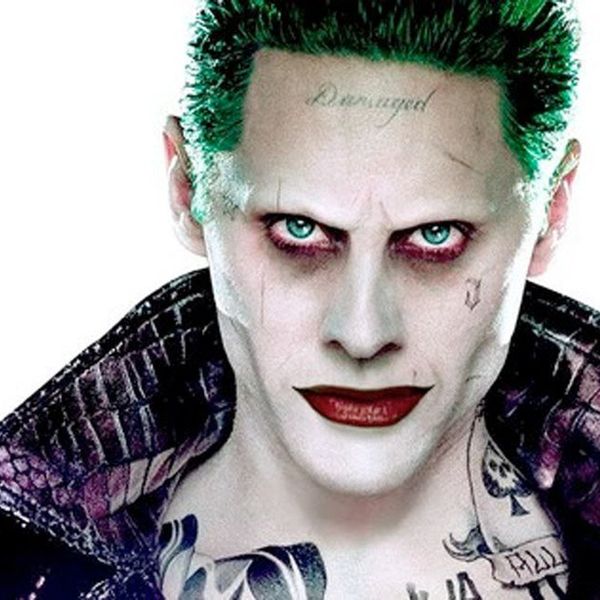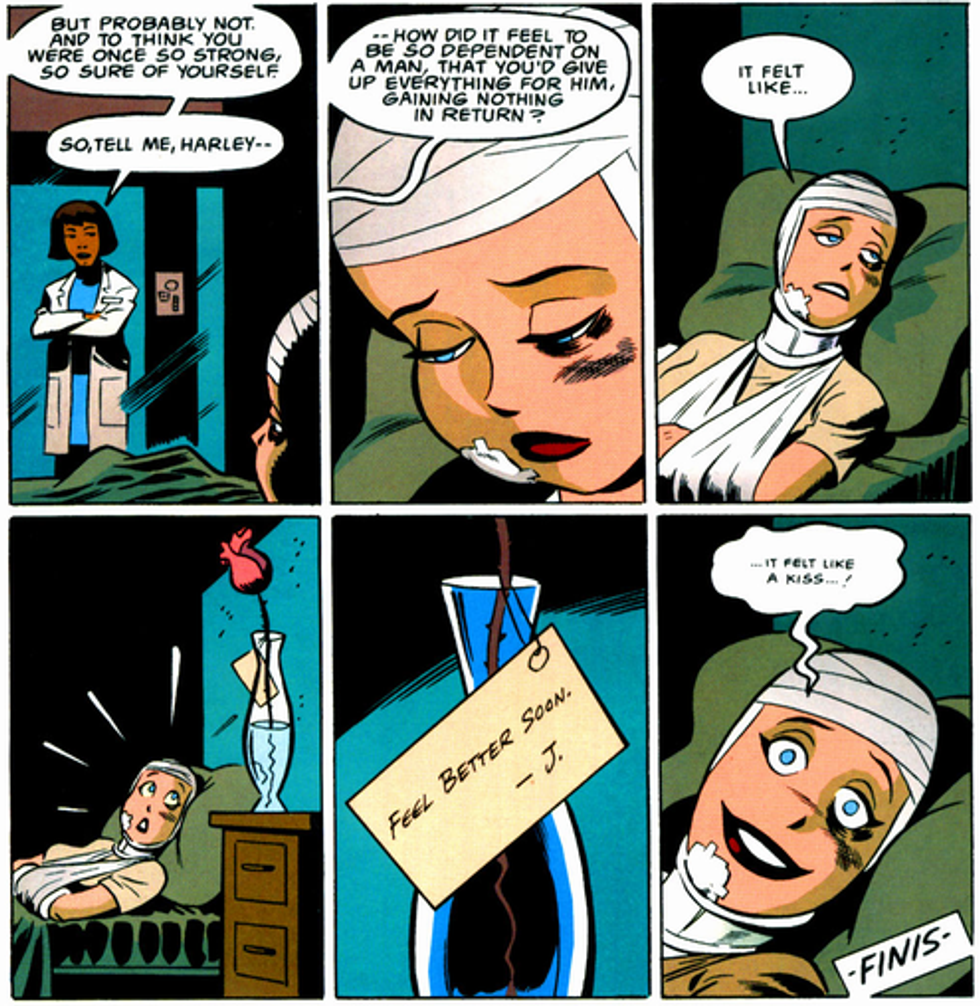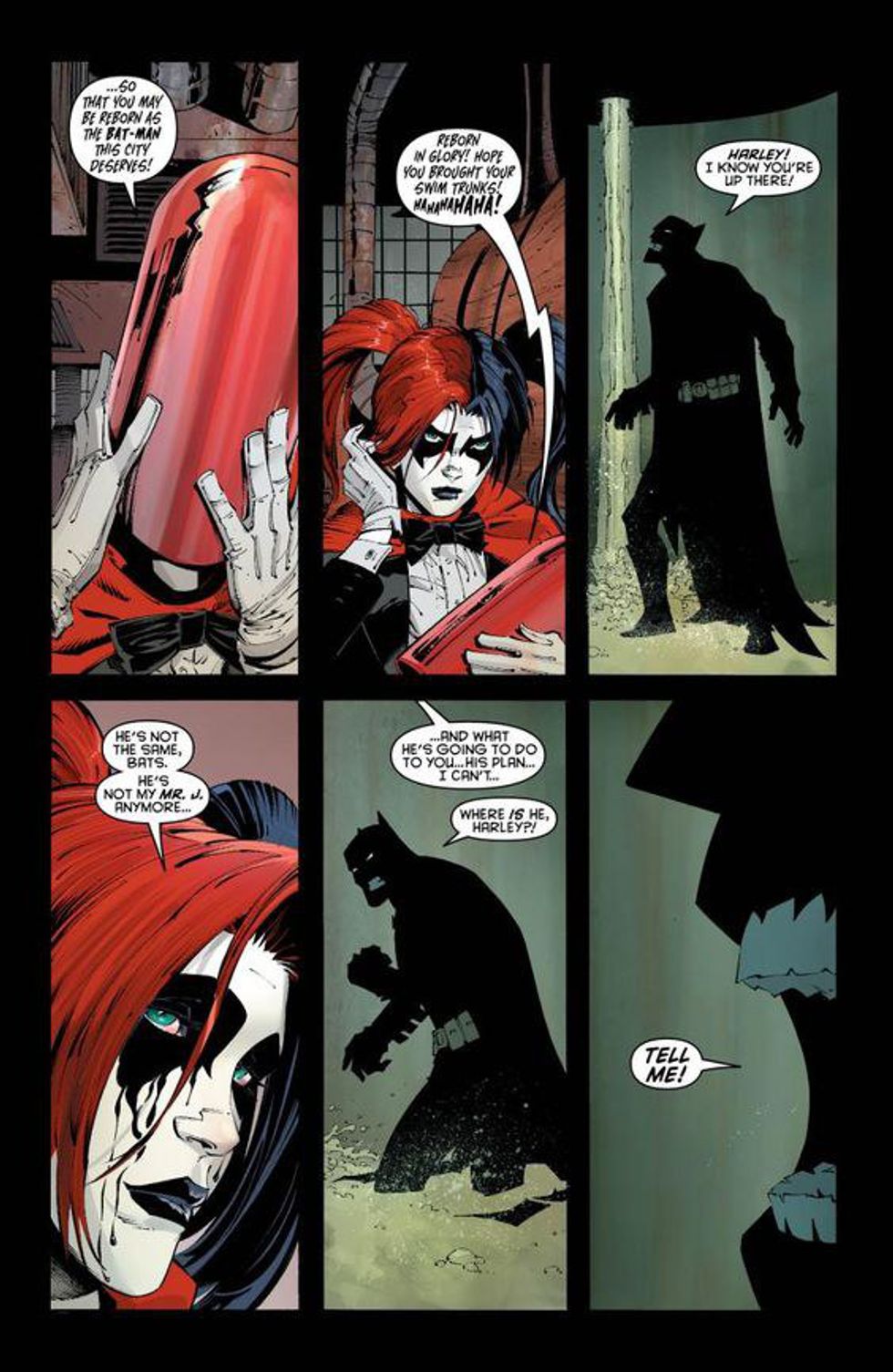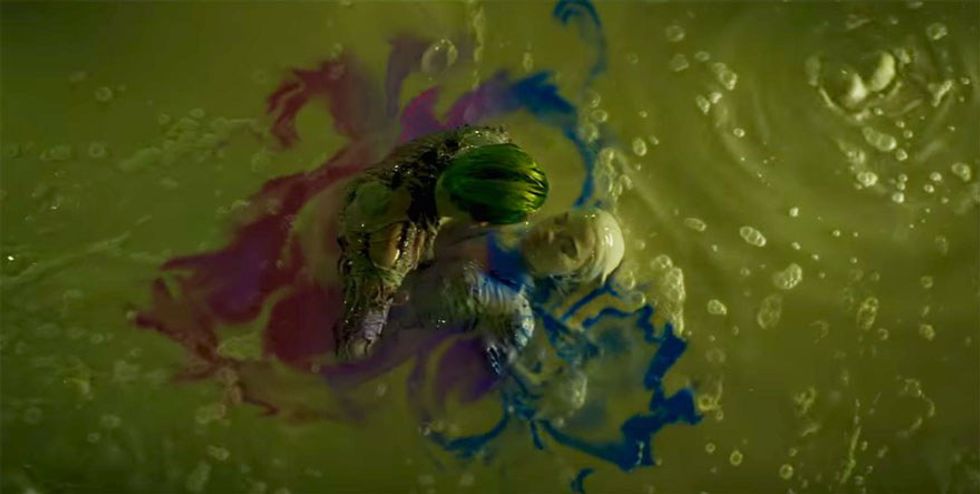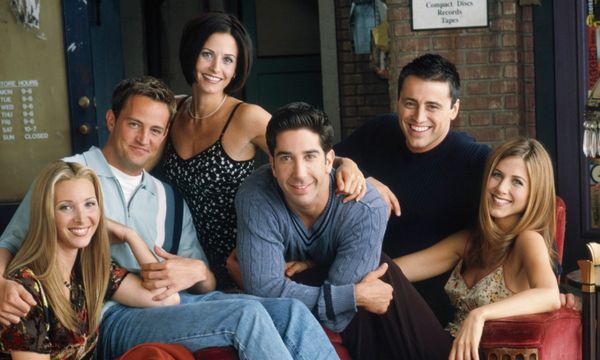A little over two weeks ago, the highly anticipated movie, "Suicide Squad" (Warner Bros. 2016) was released to theaters. Despite the less than impressive reviews of the movie, audiences flocked to the screens to witness the super villain flick. Personally, I quite enjoyed the movie and found it to be much more well written and put together than Batman v Superman: Dawn of Justice which was released months earlier. In Suicide Squad, the cast members were well acclimated to their roles and had wonderful, onscreen chemistry. While many viewers (including myself) were taken aback by the sudden group cohesion and familial feelings of the super villains, one particular interpersonal dynamic seemed to be the most off. What I am referring to is the on screen relationship between Harley Quinn and the Joker. I noticed that many of my fellow viewers complained about the accuracy of the comic to cinematic translation but still praised the partnership of Ms. Quinzel and Mr. J. That being said, let me shed a little bit of light on the real relationship of the Joker and Harley in reference to the comics.
A few days ago, I found myself in a local FYE purchasing a Harley Quinn keychain for my keyring. I have been a fan of the comic book villainess for as long as I can remember and have read many of her comics as well as watched Batman: The Animated Series when I was a child. Being the friendly person that I am, I quickly struck up a conversation with the cashier and asked him if he had seen Suicide Squad. He said that he had which led me to my next question; “what did you think about the Joker and Harley Quinn?” Again, he answered positively, stating that he especially liked Margot Robbie as Harley Quinn. I then said, “isn’t it weird how much the Joker seemed to care about Harley Quinn?” He replied, “what do you mean? The Joker has always cared about Harley Quinn.” With my knowledge of the original relationship of the comic couple, I completed my purchase and left the store ultimately dumbfounded. So now, here I am writing an article about this topic, ready to analyze both the comic and movie interpretation of the Joker and Harley Quinn’s relationship.
To begin, a little history about Harley Quinn’s past. Just about every DC fan is aware that the Joker has been around for about 50 years however, Harley Quinn is a slightly different story. In 1992, Harley Quinn was first introduced to the Batman universe through Batman: The Animated Series in which she was portrayed as the Joker’s psychotic “girlfriend.” The reason why I phrase it this way is because Harley Quinn is more of a “play thing” to the Joker, not a girlfriend. In the animated series, Harley Quinn is verbally and physically abused by the Joker. There is even an episode where she realizes he does not actually love her and runs away from him for a time. But because of her strong, delusional attachment, she keeps coming back to his abuse.
Poison Ivy and Harley Quinn discussing the Joker's abuse in Batman: The Animated Series (1992).
In 1993, Harley Quinn became part of the comic canon and made her first comic appearance in Batman: Harley Quinn. In this story, we really see just how sick and controlling the Joker is when it comes to his “love interest.” This comic opens with Harley Quinn being found in a mound of rubble outside of Arkham Asylum by Poison Ivy. Ivy decides to help Harley get back on her feet and in return, Harley tells her all about the abuse she has been subjected to. Harley tells Ivy about how she fell in love with the Joker as she was his doctor at Arkham (I will explain this a bit more later). We then find out that the Joker not only used Harley, but he attempts to dispose of her by launching her in a rocket. That’s right, a rocket. Later on, Ivy gives Harley a concoction to make her stronger which leads to her taking revenge on the Joker. At this point, she hates him and wants to see him dead. Unfortunately, in the midst of the fight, the Joker apologizes and Harley immediately goes back to him. This is just the first example of how abusive and manipulative this relationship is.
The Joker attempts to kill Harley Quinn.
In 1994, a graphic novel titled, Mad Love was written to focus on Harley Quinn’s backstory. In this issue, we find out that Harley Quinn was a psychiatric intern known as Harleeen Quinzel. A skilled gymnast prior to college, Harleen gets into Gotham University on an athletic scholarship. Later, she ends up sleeping her way through medical school and is then assigned to analyze the Joker while interning at Arkham Asylum. Consequently, the Joker gets inside of her head through his childhood “sob stories” and she ends up falling for him. He manipulates Ms. Quinzel into helping him to escape. Finally, she can be with her love. But instead of love and paradise, all she gets is abuse. The Joker continues to belittle and degrade Harley and eventually abandons her by the end of the novel. In the last few pages of Mad Love, we see Harley Quinn admitted to Arkham Asylum. She is pained both physically and emotionally and now hates the Joker for what he did to her. But then, she notices a “get well soon” flower from Mr. J himself and is instantly “in love” again. Even in her backstory, we see an abusive, Stockholm type relationship.
Harley Quinn in Mad Love (1994).
Fast forward to 2012 to the comic titled Death of the Family. In this comic, the Joker is planning to take down Batman’s super hero family once and for all. Although this issue only features Harley Quinn briefly, I felt it worthy to mention as we can see how abused and broken she is from the Joker. At one point, the Joker lures the Batman to the place where he fell into toxic chemicals and was “reborn” as the psychotic killer. Batman meets him at this location and the Joker dawns his original costume from when he was The Red Hood. The costume is a tuxedo, a cape, and a read “helmet” that completely covers the cape. After a brief fight, we discover that the person wearing the suit is actually Harley Quinn who has been instructed by the Joker to distract Batman. Batman questions Harley Quinn about where the Joker is and we clearly see how much she fears for her life. She reluctantly tells Batman and cries, realizing that the Joker will probably “punish” her later.
Harley Quinn in Death of the Family (2012).
I could go on with examples of the Joker and Harley Quinn’s relationship, but I will leave it at just these few. Now, for the movie. In Suicide Squad, we see that although the Joker is truly psychotic and manipulative, one of his main goals throughout the film is to rescue Harley Quinn from Amanda Waller’s Task Force X. Essentially, Task Force X is an operation that uses villains to go on highly classified missions for the government. The catch; if a villain tries to escape of the mission goes wrong, they are immediately killed or thrown under the bus. In the film adaptation of this comic book series, we see the Joker as an emphatetic side plot character when it comes to Harley Quinn. In the flashbacks, we see how the Joker and Harley Quinn came to be. This was when I really started to see the Joker as a “villain with a conscience”, so to speak.
In 2011, the New 52 version of the Suicide Squad comics added more to Harley Quinn’s backstory. In this version, we see how she (just like the Joker) is “reborn” by falling into a tub of toxic chemicals. The Suicide Squad film took this scene directly from the comics but not without completely changing the dynamic. In the comics, the Joker pushes Harley Quinn into the chemicals. He walks down the stairs to where she fell and checks to see if she is “actually alive.” Miraculously, she is, and so begins the twisted love affair. In the movie, the tone is completely different. The Joker takes Harley Quinn to a warehouse and makes her swear allegiance to him, convincing her to take the dive into the toxic chemicals. On her own, she jumps in as she promises to “live for” the Joker. After she jumps in, the Joker turns his back to leave as he is convinced she probably did not survive the fall. But then, we see the Joker have a change of heart. He feels guilty so he dives into the chemicals after her, reviving her with a kiss. Same scene between the comic and the movie, different details.
Joker jumps in to toxic chemicals to revive Harley Quinn in the Suicide Squad movie (Warner Brow 2016).
To conclude, I do not think that the film interpretation of the Joker and Harley Quinn’s relationship is necessarily a bad one. I respect the artistic interpretation and thought it interesting how the director presented the relationship in a way that caused the audience to care about the relationship and characters. Overall, it is important not to forget the original character relationships from the comics as we cross over to different interpretations.


